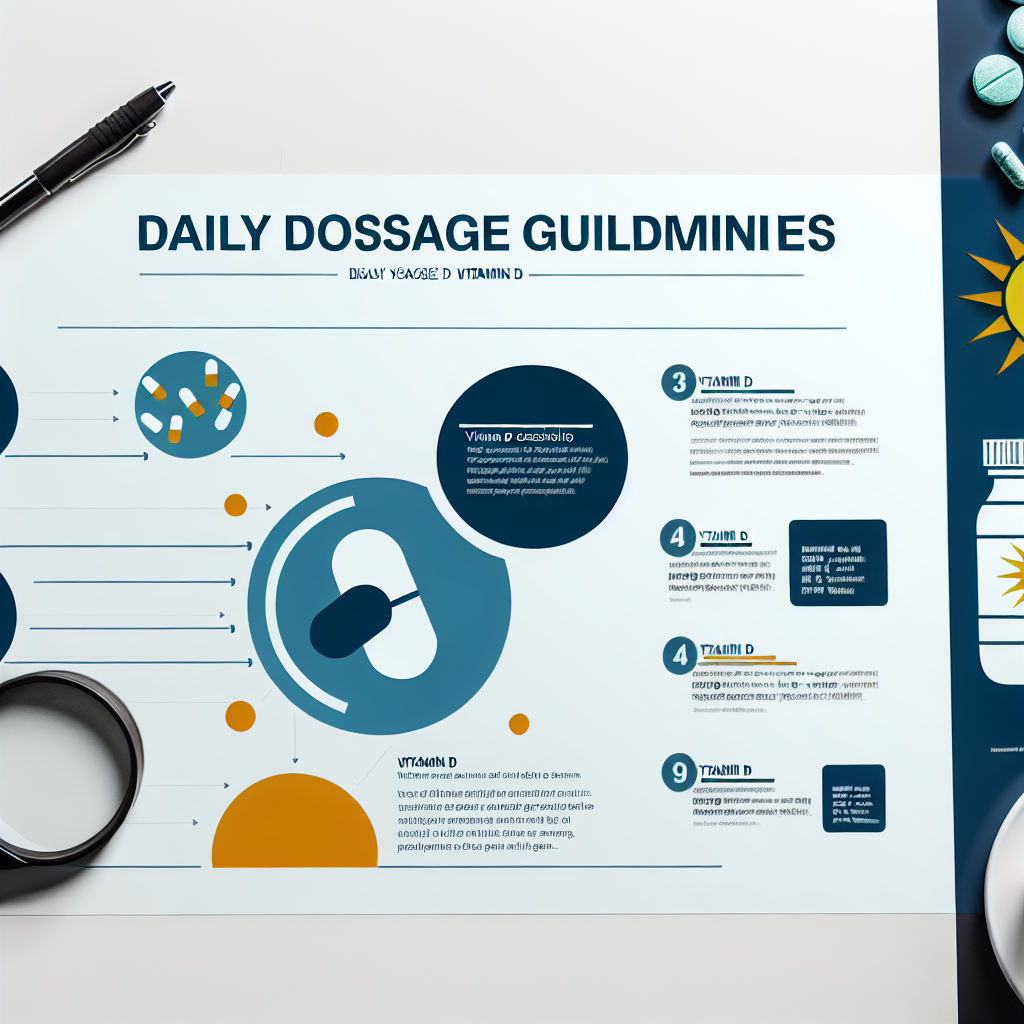Vitamin D—often referred to as the “sunshine vitamin”—might be one of the most important nutrients for your health, yet many people don’t even realize they’re falling short. It plays a vital role in bone strength, immune system function, and even mental health. But how much do you really need each day to keep your body humming smoothly? Let’s explore the recommended daily intake, factors that affect your levels, and easy ways to ensure you’re getting enough vitamin D.
What Is Vitamin D, and Why Does It Matter?
Vitamin D is a fat-soluble vitamin that helps your body absorb calcium and phosphorus—two essential minerals for maintaining strong bones and teeth. Without enough of it, your bones can weaken and your immune system can falter, making you more vulnerable to illness. But vitamin D’s benefits don’t stop there. Emerging research suggests it may play a role in reducing inflammation, improving muscle strength, and even supporting mental health.
Unlike most vitamins, your body can produce vitamin D naturally when your skin is exposed to sunlight. However, factors like limited sun exposure, indoor lifestyles, and dietary habits often lead to insufficient levels, making it important to pay attention to your daily vitamin D requirements.
How Much Vitamin D Do You Need Per Day?
Vitamin D needs vary depending on your age, health, and lifestyle. Below are the recommended daily intake (RDI) values based on guidelines from the National Institutes of Health (NIH) and other trusted sources:
| Age Group | Recommended Daily Intake |
|---|---|
| Infants (0–12 months) | 400 IU/day |
| Children (1–18 years) | 600 IU/day |
| Adults (19–70 years) | 600 IU/day |
| Seniors (71+ years) | 800 IU/day |
| Pregnant/Breastfeeding Women | 600 IU/day |
Keep in mind that these are averages, and your personal circumstances may necessitate adjustments. Let’s look at what factors influence your vitamin D needs.
Factors That Impact Your Vitamin D Levels
Your vitamin D requirements aren’t set in stone. Several variables come into play, each affecting how much your body needs or how well it processes the vitamin. Here’s what you should keep in mind:
1. Sunlight Exposure
Sunlight is your body’s main source of vitamin D production. When your skin is exposed to UVB rays, it begins to produce vitamin D naturally. However, factors like cloud coverage, sunscreen, and living in higher latitudes can drastically reduce your body’s ability to synthesize it.
2. Skin Tone
Melanin, the pigment that gives skin its color, affects how efficiently sunlight can convert to vitamin D. People with darker skin tones may need longer exposure to sunlight to produce adequate amounts of vitamin D compared to those with lighter skin.
3. Age
As you get older, your skin’s ability to produce vitamin D declines. This, coupled with a reduction in absorption efficiency, makes older adults more prone to deficiency.
4. Diet and Absorption Issues
If your diet is low in vitamin D-rich foods or you have a condition like Crohn’s disease or celiac disease, your ability to absorb vitamin D may be compromised. Fortified foods and supplements can help bridge the gap.
Signs You’re Not Getting Enough Vitamin D
Vitamin D deficiency can creep up slowly, often without obvious symptoms until it begins to affect your health more significantly. Here are some common warning signs:
- Bone Problems: Weak or brittle bones, joint pain, and fractures are all red flags.
- Fatigue: Feeling overly tired despite getting enough rest.
- Frequent Illness: A weakened immune system may result in more colds and infections.
- Mood Changes: Feeling down or experiencing seasonal depression may be linked to low vitamin D levels.
If you experience any of these symptoms regularly, it’s worth discussing your vitamin D levels with your healthcare provider.
Can You Have Too Much Vitamin D?
While vitamin D is vital for your health, taking excessive amounts can lead to vitamin D toxicity, a condition caused by over-supplementing. This results in high calcium levels in the blood, which can cause nausea, kidney issues, or other complications.
Safe Limits
For most adults, the upper limit is 4,000 IU/day. It’s always best to consult a healthcare professional before significantly increasing your intake through supplements.
How to Meet Your Daily Vitamin D Needs
Ensuring you hit your daily target is simpler than you might think. Here are three easy ways to boost your vitamin D levels:
- Get Some Sun: Aim for 10–30 minutes outside a few times a week. Bare arms and legs make a big difference when catching UVB rays.
- Eat Vitamin D-Rich Foods: Incorporate salmon, tuna, egg yolks, and fortified products like milk or cereal into your diet. For plant-based eaters, mushrooms exposed to sunlight are an excellent option.
- Take a Supplement: Vitamin D3 supplements are particularly effective. If you’re unsure how much you need, discuss your options with a doctor.
Conclusion: Finding Your Balance
Vitamin D may not be flashy, but it’s a true health powerhouse. Whether you’re focused on strengthening bones, boosting immunity, or brightening your mood, getting enough vitamin D is critical. Balance is key—while deficiency is common, overdoing it with supplements can cause harm.
Take simple steps to meet your needs. Combine safe sun exposure, vitamin D-rich foods, and supplements if necessary. If you’re unsure about your levels, a quick blood test and consultation with your doctor can offer clarity.
So step into the sunlight, cook up some nutrient-packed meals, or try a reliable supplement. Your body—and your wellbeing—will thank you.
